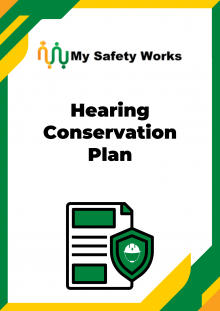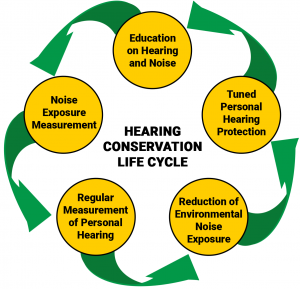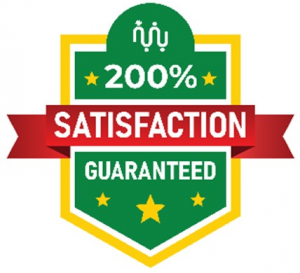
This hearing conservation plan can provide you with practical guidance on how noise affects hearing, how to identify and assess noise exposure and how to control health and safety risks arising from hazardous noise.
Occupational noise exposure refers to the level of noise to which individuals are exposed to in their workplace. It is a term used to describe the potential harmful effects of prolonged or excessive noise on workers’ health and safety.
Occupational noise is typically generated by machinery, equipment, tools, or processes in various industries such as manufacturing, construction, transportation and entertainment.
Excessive noise in the workplace can have adverse effects on a workers’ hearing and overall well-being. Prolonged exposure to high levels of noise can lead to noise-induced hearing loss (NIHL), which is a permanent and a preventable condition. NIHL occurs when loud noise damages the delicate structures of the inner ear, resulting in hearing loss and difficulties in perceiving sounds.
In addition to hearing loss, occupational noise exposure can also cause other health issues. It can lead to increased stress levels, fatigue, sleep disturbances, and reduced concentration, affecting overall job performance and productivity. Furthermore, exposure to loud noise can interfere with communication and increase the risk of workplace incidents or errors.
To mitigate the risks associated with occupational noise exposure, many countries have established regulations and guidelines to protect workers. These often include noise exposure limits that define the maximum acceptable noise levels over a specified time period.
Employers are responsible for implementing engineering controls, such as sound insulation and machinery maintenance, as well as providing personal protective equipment (PPE) like earplugs or earmuffs to reduce noise exposure.
Managing noise and preventing hearing loss at work involves implementing various strategies and measures to minimize occupational noise exposure.
Below are some key steps that can be taken.
Conduct Noise Assessments: Perform regular noise assessments in the workplace to identify areas with excessive noise levels and determine the extent of exposure. This can involve using sound level meters or dosimeters to measure noise levels at different locations and job tasks.
Engineering Controls: Implement engineering controls to reduce noise at its source. This can include modifying or replacing noisy machinery or equipment with quieter alternatives, isolating noisy equipment in soundproof enclosures or barriers, and employing noise-reducing technologies.
Administrative Controls: Implement administrative controls to minimize workers’ exposure to noise. This can involve adjusting work schedules to limit the duration of exposure, rotating workers to different tasks to reduce their overall noise exposure, and creating quiet areas or rest periods where employees can recover from high noise exposure.
Personal Protective Equipment (PPE): Provide suitable hearing protectors such as ear plugs or earmuffs to employees exposed to high noise levels. Ensure that the PPE fit tested and is comfortable to wear and is provided in sufficient quantities. Train employees on how to correctly use, maintain and replace their hearing protection.
Education and Training: Conduct safe work training programs to workers who are exposed to noise and raise awareness about the risks of noise exposure and the importance of hearing conservation. Train employees on how to identify hazardous noise levels, properly use hearing protection and report any concerns related to noise exposure. Include information about the signs and symptoms of hearing loss and the potential long-term effects of noise exposure.
Regular Monitoring and Auditing: Continuously monitor noise levels in the work environment to ensure that control measures are effective and that workers are adequately protected. Regularly review and audit the hearing conservation procedures to identify any shortcomings or areas for improvement.
Compliance with Regulations: Familiarise yourself with applicable regulations and standards related to noise exposure in your industry or region. Ensure that your workplace adheres to these requirements and that you maintain records related to noise monitoring assessments, control measures, training, and employee exposure levels.
Health Surveillance: Establish a system for regular health surveillance or audiometric testing of employees exposed to high noise levels. This can include periodic hearing tests or audiograms to monitor any changes in hearing abilities and detect early signs of hearing loss.
This hearing conservation plan provides some practical guidance on how noise affects hearing, how to identify and assess noise exposure and how to control health and safety risks arising from hazardous noise.

Topics included in this plan include:
This 16-page hearing conservation plan can assist you raise awareness among workers about the risks associated with noise exposure. It can help you promote education and training on the effects of noise and the early detection of hearing loss.
